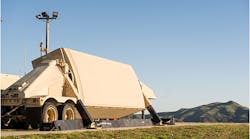Ballistic Missile Radar Approved for Sale to Foreign Allies
In recent Congressional testimony, James D. Syring, the director of the United States Missile Defense Agency, warned that technological advancements are creating a more sophisticated breed of ballistic missiles. Having to prepare for long and short range missiles, with large and small explosive payloads, defense systems will depend on early warning radars to identify and track missiles shortly after launch.
Through a recent trade agreement, the United States government is making such technology — forward-mode AN/TPY-2 ballistic missile defense radars — available to several allies. The trade agreement was carried out through the Foreign Military Sales program and sanctioned by the Arms Export Control Act, which allows the government to sell arms to foreign nations as long as it serves American security interests.
Developed by Raytheon, the AN/TPY-2 is a transportable, high-resolution, X-band, phased-array radar system. Under the trade agreement, this system was authorized for sale in a forward-based mode. Configured for operation near hostile territory, it provides tracking information on ballistic missiles in the boost phase shortly after they are launched. Then, the system conveys that information to operational commanders through a battle management communications network. Within the U.S. Ballistic Missile Defense System (BMDS), the AN/TPY-2 is part of a layered network of sensors and radars that serve to track and target missiles during flight.
Raytheon has delivered 10 AN/TPY-2 systems to the United States Missile Defense Agency and has two more in production. Most have been deployed in forward-base mode to U.S. forces in Japan, Turkey, Guam, and Israel. The system was recently sold to the United Arab Emirates in a terminal-based mode, a configuration that has already been authorized for sale by the U.S. government. Virtually identical in terms of appearance, the only difference between the forward and terminal-based modes is the software. In terminal-based modes, the AN/TPY-2 system is configured as the targeting and fire control radar for Terminal High Altitude Area Defense (THAAD) systems.
